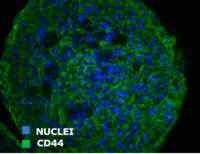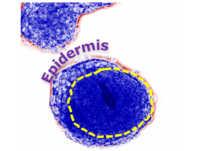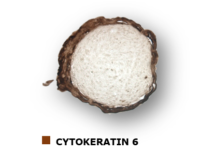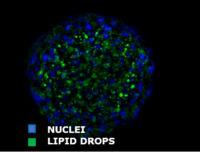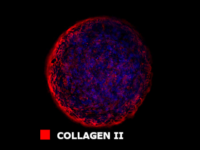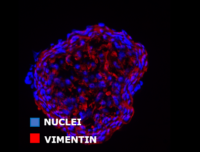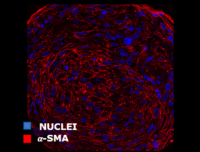
VitroScreen ORA®: a miniaturized organ and tissue specific 3D model mirroring phenotypic characteristic of the donor’s cells and related metabolic pathways.
We develop standard and customized models using primary cells, IPSC derived cells cultivated as single type or in co-colture*. These models can be maintained in homeostatic or under stress conditions.
Each spheroid reproduces a microenvironment where ECM deposition, organization and dynamic evolution occur slowly relying on an efficient cell-matrix interaction.
VitroScreen ORA® models are suitable to perform long-term experimental protocols (up to 28 days) with treatment doses closer to in vivo ranges.
Mechanism-based assays performed on VitroScreen ORA® models rely on the dynamic monitoring of target genes transcriptional activity and proteins localization and quantification by high content imaging.
MAIN FEATURES
Scaffold free and produced by hanging drop: cells grow and organize themselves spontaneously, according to their natural physiology reproducing in vitro the typical morphology and function of their tissue of origin
Few cells required: 5000 cells/microtissue in serum-free conditions; cell number per drop defines the size and cellular composition
Suitable for testing all types of active ingredients in order to go deeper in the understanding their interactions with tissues’ and organs specific microenvironments formed by cells and extracellular matrix.
| CELL TYPE | KEY FEATURES AND APPLICATIONS | |
| DERMIS | HDFs: Primary Human Dermal Fibroblasts (from single donors of different ages) |
• ECM proteins different deposition with young or old donors • Targeting genes of ageing process and dermal matrix deposition and remodelling • Atrophy, bio-revitalisation, personalized care • Co-coltures with endothelial cells, monocytes • Inflammatory model |
| SKIN | HDFs and HKs: Primary Human Dermal Fibroblasts and Primary Human Epidermal Keartinocytes
co-culture * |
• Early screening of differentiation and barrier formation • Cross-talk and molecular pathways between dermis-epidermis compartments |
| HAIR FOLLICLE and DERMOPAPILLA |
HPDCs and HFKs: Human Hair Follicle Dermopapillar Cells and Human Hair Follicle Keratinocytes
co-culture * |
• Unique in vitro model to study hair cycling, anagen/catagen transition and suitable to follow catagen involution • It can be used as an isolated dermopapilla or as a hair follicle with surrounding HFKs |
| ADIPE | Primary Human Subcutaneus Pre-adipocytes; Human IPSC-derived MSCs |
• Metabolic studies • Metabolic disorders simulation and long term exposures • Stress models: inflammation, differentiation and fibrosis • Lipolysis, adipogenesis, lipo-boosting, lipid destock: slimming, plumpling, resculpting • Applicable to pre, pro, postbiotics (customized models) |
| CORNEAL STROMA | HKs: Primary Human Keratocytes | • It reproduces corneal stroma ECM modifications induced by pathologies or injuries (keratoconus, keratitis) |
| PROSTATE | HPrECs and PrSMCs: Human Primary Prostate Epithelial Cells and Prostate Human Smooth Muscle Cells
co-culture * |
• It mimicks prostatic capsule: a core of epithelial secretory cells embedded in a thin layer of smooth muscle cells forming fibromuscular bands • 5-α reductase model: TST conversion in DHA • Passage, penetration and metabolism studies |
| CARTILAGE | HCs: Primary Human Chondrocytes | • It recapitulates phenotypical features of native cartilage • Metabolic studies: it expresses key biomarkers of tissue differentiation • Cartilage degradation and regeneration • Inflammatory model |
| ENDOMETRIUM | T-HESC and HEC-1-A: endometrial fibroblasts and epithelial endometrial cells
co-culture * |
• Dynamic model to monitor endometrial maturation • Receptivity for embryo implantation • Sexual hormones cycle and metabolism |
*EU Patent Certificate N. 102017000128725
